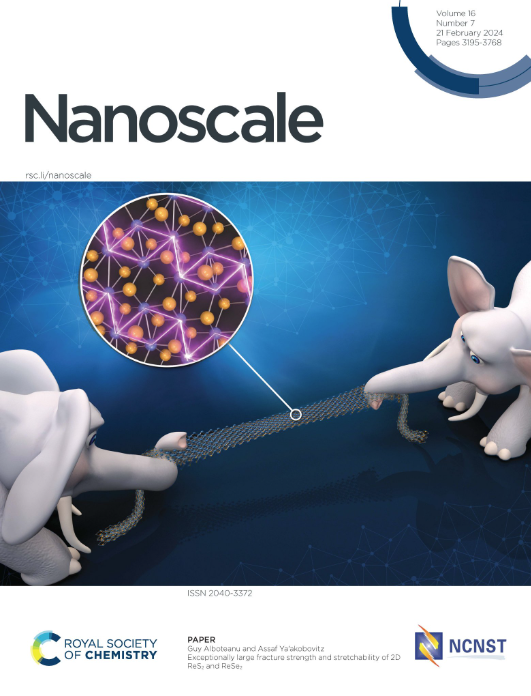atp反应纳米颗粒用于改善化学动力学治疗和双重饥饿治疗
IF 5.8
3区 材料科学
Q1 CHEMISTRY, MULTIDISCIPLINARY
引用次数: 0
摘要
癌症已成为人类健康的严重威胁,寻找安全有效的治疗方法尤为迫切。化学动力疗法(Chemodynamic therapy, CDT)是一种无创治疗方法,但由于GSH过表达,治疗效果有限,治疗方式单一等缺点。本文构建了基于zif的纳米Cu2+-SK-GOD@ZIF-90,用于改善化学动力学治疗和双饥饿治疗(ST)。这些纳米粒子被癌细胞中高水平的ATP破坏,释放出Cu2+、SK和GOD。在Cu2+和GSH的作用下生成Cu+,并通过Fenton-like反应催化H2O2生成用于CDT的•OH。GSH的消耗和H2O2的产生都提高了化疗的效果。此外,SK和GOD分别通过抑制糖酵解和阻断葡萄糖用于双重饥饿治疗。体内实验证明,Cu2+-SK-GOD@ZIF-90协同治疗CDT和双ST可有效抑制肿瘤生长,显著延长小鼠生存期,优于Cu2+@ZIF-90和Cu2+-SK@ZIF-90。这种CDT和ST相结合的协同治疗提供了一种有效而安全的治疗癌症的方法。本文章由计算机程序翻译,如有差异,请以英文原文为准。
ATP-responsive nanoparticles for improved chemodynamic therapy and dual starvation therapy
Cancer has become a serious threat to human health and the search for a safe and effective treatment method is particularly urgent. Chemodynamic therapy (CDT) is noninvasive therapeutic method, but CDT still has certain disadvantages such as limited therapeutic efficacy by overexpression of GSH and single treatment mode. In this paper, ZIF-based nanoparticles called Cu2+-SK-GOD@ZIF-90 is constructed for improved chemodynamic therapy and dual starvation therapy (ST). The nanoparticles is destroyed by high levels of ATP in cancer cells, releasing Cu2+, SK and GOD. Under the action of Cu2+ and GSH, Cu+ is generated and catalyzes H2O2 to produce •OH for CDT by Fenton-like reaction. Both the depletion of GSH and the production of H2O2 improves the effect of chemodynamic therapy. Moreover, SK and GOD are used for dual starvation therapy by inhibiting glycolysis and blocking glucose, respectively. The in-vivo experiments have demonstrated that the synergistic treatment of CDT and dual ST by Cu2+-SK-GOD@ZIF-90 can effectively inhibit the growth of tumors and significantly prolong survival of mice, which is better than Cu2+@ZIF-90 and Cu2+-SK@ZIF-90. This synergistic treatment combining CDT and ST offers an effective and safe way to treat cancer.
求助全文
通过发布文献求助,成功后即可免费获取论文全文。
去求助
来源期刊

Nanoscale
CHEMISTRY, MULTIDISCIPLINARY-NANOSCIENCE & NANOTECHNOLOGY
CiteScore
12.10
自引率
3.00%
发文量
1628
审稿时长
1.6 months
期刊介绍:
Nanoscale is a high-impact international journal, publishing high-quality research across nanoscience and nanotechnology. Nanoscale publishes a full mix of research articles on experimental and theoretical work, including reviews, communications, and full papers.Highly interdisciplinary, this journal appeals to scientists, researchers and professionals interested in nanoscience and nanotechnology, quantum materials and quantum technology, including the areas of physics, chemistry, biology, medicine, materials, energy/environment, information technology, detection science, healthcare and drug discovery, and electronics.
 求助内容:
求助内容: 应助结果提醒方式:
应助结果提醒方式:


